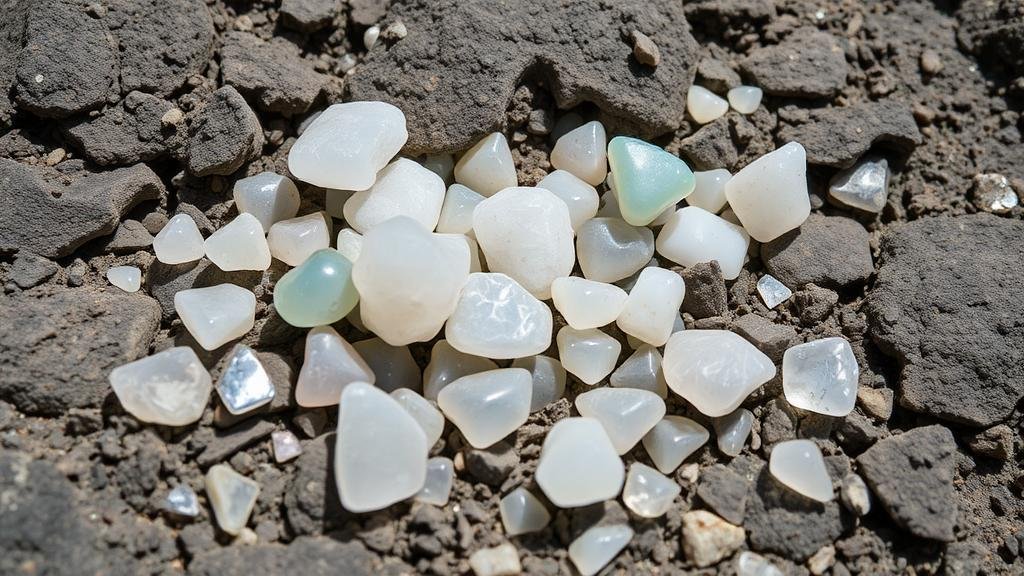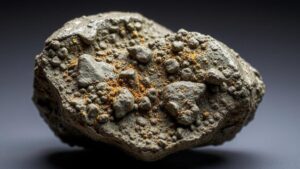Searching for chalcedony nodules in the volcanic tuffs of the Cookes Range, known for their pastel hues.
Searching for Chalcedony Nodules in the Volcanic Tuffs of the Cookes Range
The Cookes Range, located in New Mexico, is a treasure trove for rockhounds and mineral collectors seeking beautiful chalcedony nodules. Known for their striking pastel hues, chalcedony nodules formed within ancient volcanic tuffs provide a unique opportunity for enthusiasts to explore geology and gather stunning specimens. This article will guide you through the process of finding these fascinating nodules while understanding their formation and significance.
The Geological Context
The Cookes Range is primarily composed of volcanic tuffs, which are formed from the explosive eruptions of volcanoes that spew ash and gas. e eruptions create a layered structure rich in minerals and serve as a fertile ground for chalcedony formation. Chalcedony, a microcrystalline form of silica, often appears in a range of pastel colors, including soft pinks, blues, and yellows due to the impurities infused during its crystallization process.
The geological features of the Cookes Range include:
- Volcanoes that erupted more than 25 million years ago.
- Layered deposits that have been shaped by erosion and sedimentation.
- A diverse mineral composition allowing for unique color variations in chalcedony.
Identifying Chalcedony Nodules
Chalcedony nodules typically range between 1 to 10 inches in diameter, though larger specimens can occasionally be found. They are often rounded or ovoid in shape and can be located within the volcanic tuffs. r exterior may appear rough and pitted while the interior often displays the smooth, translucent qualities characteristic of chalcedony.
To identify chalcedony in the field, consider the following tips:
- Look for color: Not all nodules will be pastel hues. Be vigilant for gray, blue, and even lavender, which are common in the Cookes Range.
- Assess the texture: A rough exterior with a potentially glassy fracture surface is a good indication of chalcedony.
- Use a scratch test: Chalcedony will typically score with a hardness of 6.5 to 7 on the Mohs scale, allowing it to scratch glass.
Collecting Techniques and Best Practices
Chalcedony collecting can be a rewarding endeavor, and understanding the proper techniques will enhance your experience:
- Timing: Plan your visits for dry seasons, typically late spring to early fall when access is easier and erosion is visible.
- Sourcing Locations: Research areas with known deposits. Local rockhounding clubs or online forums can provide valuable information about access points.
- Tools of the Trade: Use a field pick, rock hammer, and safety goggles. A small shovel can also aid in digging up buried nodules.
Environmental Considerations
While gathering chalcedony, it is crucial to respect the environment as well as local regulations. The Cookes Range is part of public lands; thus, the following practices should be observed:
- Follow Leave No Trace principles: Ensure that your collecting does not disturb local wildlife or ecosystems.
- Obtain necessary permits: In certain areas, you may need permits for collecting minerals.
- Be mindful of safety: Always inform someone about your collecting location and plan in case of emergencies.
Appraising Your Finds
Once you have gathered your chalcedony nodules, it’s essential to appraise their quality. Consider the following factors:
- Color: More vibrant and unique hues will typically command higher interest.
- Translucency: High-quality chalcedony will be semi-transparent or transparent.
- Inclusions: Unique markings or appearances can enhance their aesthetic appeal.
For collectors interested in resale, understanding the market trends is vital. You may find these nodules valued between $5 to $50 or even more, depending on their quality and uniqueness.
Conclusion: A Collecting Adventure Awaits
Searching for chalcedony nodules in the Cookes Range offers a captivating blend of geological exploration and collectible beauty. With their pastel hues and unique formations, these nodules represent a tiny fraction of the richness found in the volcanic tuffs of this remarkable region. By approaching the hunt with respect for the environment and employing sound collecting practices, you not only engage with nature but also enrich your collection with stunning specimens. Happy hunting!



